Omnichannel advertising produces better results

Although in the last year, the digital advertising industry has encountered multiple challenges around consumer privacy and data protection, its contribution to the global economy is undeniable.
Digital advertising plays a vital role in helping companies meet a range of business objectives, ranging from the need to generate revenue and lower costs, to supporting goals such as raising brand awareness and influence consumer opinions.
A study published last year by IHS Markit on the economic contribution of digital advertising in Europe found that the advertising industry adds $526 billion to the European economy each year, with over 6 million jobs forming part of the digital advertising industry.
Meanwhile, in the U.S., according to an IAB study, it was discovered that, by 2016, the digital advertising ecosystem had already generated $1.121 billion.
What is the purpose of advertising companies?
The main objective for advertisers is to increase advertising efficiency, as evidenced by the percentages offered by MediaMath and Econsultancy in their report “Dream vs. Reality: The State of ConsumerFirst and Omnichannel Marketingcon,where more than half (59%) of advertisers and about three-quarters (76%) of agencies and technology providers cited this as one of the top three priorities
It is this search for greater efficiency, that has driven the growth of programmatic advertising, with automated operations led by algorithms that reduce waste and increase return on investment in advertising.
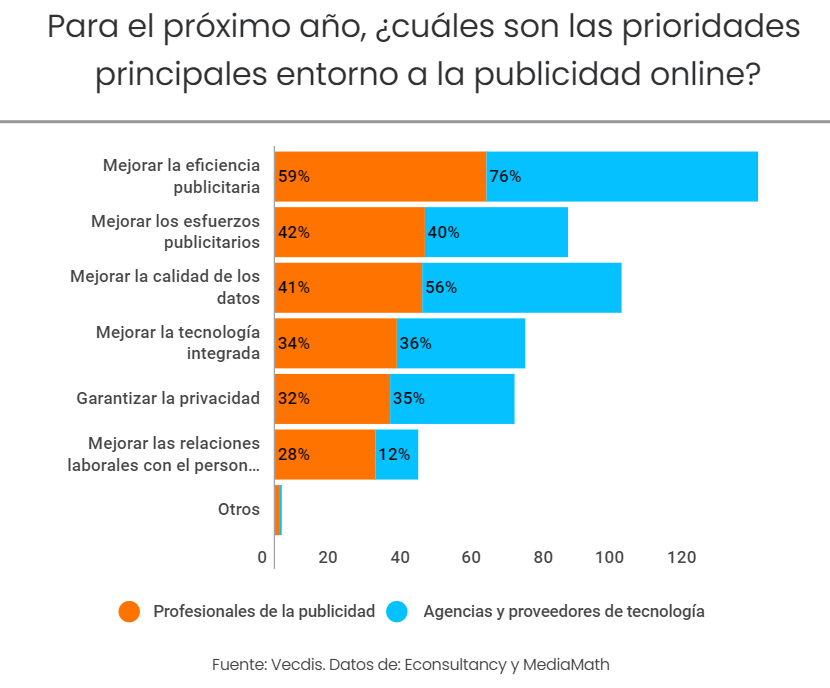
On the other hand, the research published by eMarketer estimates that $46 billion will go to programmatic advertising in the U.S. throughout 2018. Which represents 82.5% of all digital resources.
Despite its many advantages, programmatic advertising is not without challenges. Concerns about transparency across the value chain, advertising fraud and inconsistency are some of them. Not to mention, the recent enactment of the GDPR, which triggered a reduction in demand for digital ads in Europe.
These are issues that the industry must continue to address to support the continued evolution of advertising and the opportunity to create an online environment that is ultimately better for the consumer and advertiser.
Consumers go first
To remain competitive, today’s companies need to deliver experiences that satisfy their customers beyond their expectations. Marketing specialists need to be able to deliver these consistent and consistent experiences across all appropriate channels, both online and offline, and always meeting privacy requirements.
However, there are many parts that include technology, data and processes, which need to work in harmony for marketing professionals to create advertising that respects and does not compromise consumer data. From isolated data to last-touch attribution models, many marketing professionals are faced with not counting the tools to do this efficiently and effectively.
Research conducted by Econsultancy shows that putting the consumer at the center of all business strategies is a dominant current in the business. An overwhelming 91% of the advertising companies agree to put the customer first in all their marketing efforts.
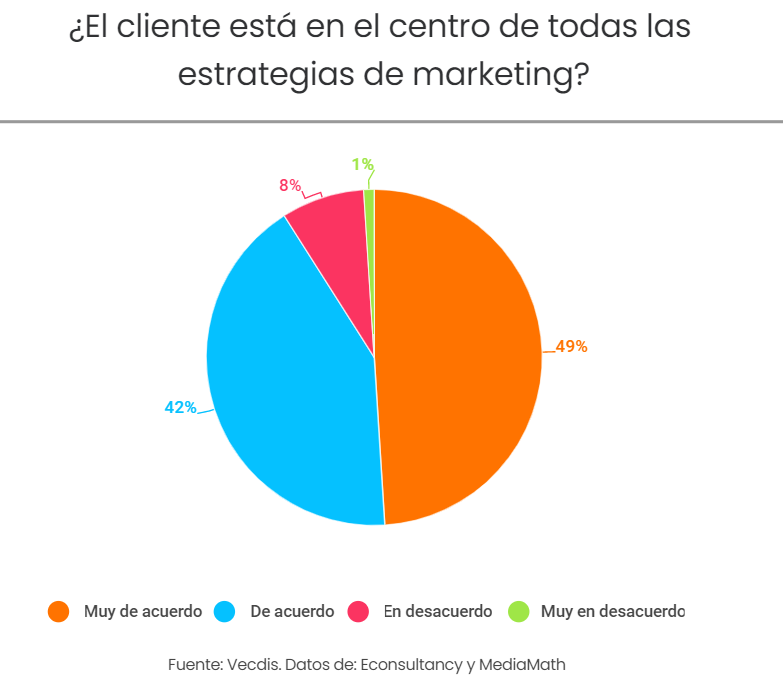
The results also showed that companies are well aware that making the consumer a primary element, involves uniting communications across multiple channels.
More than nine out of ten (92%) companies surveyed agreed that omnichannel advertising produces better results than fragmented ones. In addition, a similar percentage (94%) agreed that the most efficient online advertising generally has to be adapted to each stage of the customer’s journey.
However, thinking and doing are not the same. The investigation also found that while almost all companies recognize what is required, there are still a significant number that have not yet identified these needs.
While almost all the companies surveyed recognized the importance of putting the customer first in all their marketing efforts, the majority (51%) of the companies recognize that they do not do so in their entirety.
According to Lewis Rothkopf, general manager of MediaMath’s Media and Growth Channels, the reasons why companies have not decided to adopt a strategy in which the customer is the center are:
“Marketing professionals strive to define what omnichannel means, there is a general recognition of the change that consumers have undergone and that from now on their needs must be addressed appropriately, throughout the buy, however, sometimes it is a challenge to determine the right combination of channels needed to achieve that goal. In addition, existing tools for omnichannel execution can be a challenge in themselves, and may not even be sufficient to address all the points of contact needed for the consumer. “
The solution to keep this from happening starts with an integrated technology through which companies can be present on all channels without problems, without neglecting the optimization of campaigns, focusing, managing, creating and understanding the whole campaign in the most effective way.
The increasingly obvious difference between offline and online
The ability to establish how much each point of contact influences the customer journey before its final purchase decision is known as attribution, known as attribution. Attribution has long been a target of industry professionals, as this information represents a crucial step in optimizing spending and thus maximizing the return on advertising investment.
However, while technology has been bringing digital channels to get the information needed through the customer journey, offline channels remain a big challenge for companies that don’t focus their efforts on larger channels. The 93% companies agree that effective online attribution and offline activity are essential. However, once again, the gap is clear. Only two-thirds (67%) of respondents said they could accurately attribute their online advertising spend.
A more detailed analysis of the data revealed that companies that take an omnichannel approach to their advertising campaigns are more than twice as likely to accurately attribute their online and offline spending, versus those who do not (78% vs. 30%).
There is a strong correlation between the inability to adopt an omnichannel approach and the lack of capacity to carry out effective attribution, seven out of 10 (70%) organizations without an omnichannel approach also lack the ability to attribute with accuracy of your online spending.
The fundamental need of integrated martech
Behind everything exposed so far lies technology. Once again, the 92% of companies in the advertising sector agree that one of the crucial ingredients of fluid and effective advertising is to have integrated technology.
Only about one-third (37%) advertisers agree that marketing and advertising should work in tune with highly integrated systems, while only a small proportion of agencies and technology providers (4%) confirms that this is the case.
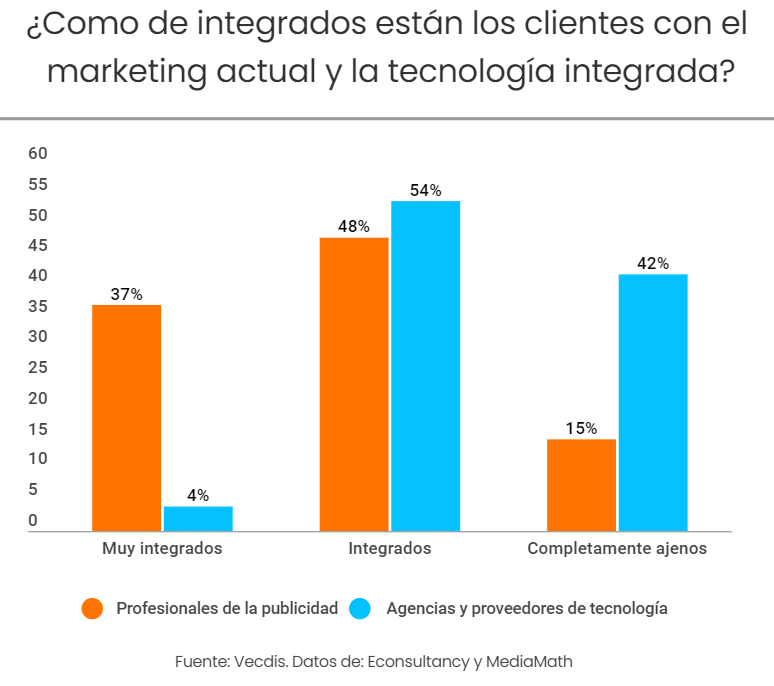
A related and increasingly fundamental requirement for advertisers is the ability to streamline audiences depending on the segment they belong to. It’s a capability that’s at the top of your business wish list when it comes to improving the advertising experience for consumers.
Two-thirds (67%) of respondents intend to improve this capacity over the next five years. Because targeting the right kind of advertising to the right customers, in real time or near real time, is fast becoming an essential capability for companies looking to put the consumer first, both to deliver messages relevant to comply with privacy controls.
On the other hand, data loss and latency are at the lowest positions when it comes to perceived benefits from integrated technology. This is interesting because one of the benefits of dynamic targeting through an integrated platform allows audiences to activate faster and smoothly across different media.
In addition, any loss in data decreases the accuracy of audience segments, which can lead consumers to see the same ad again.
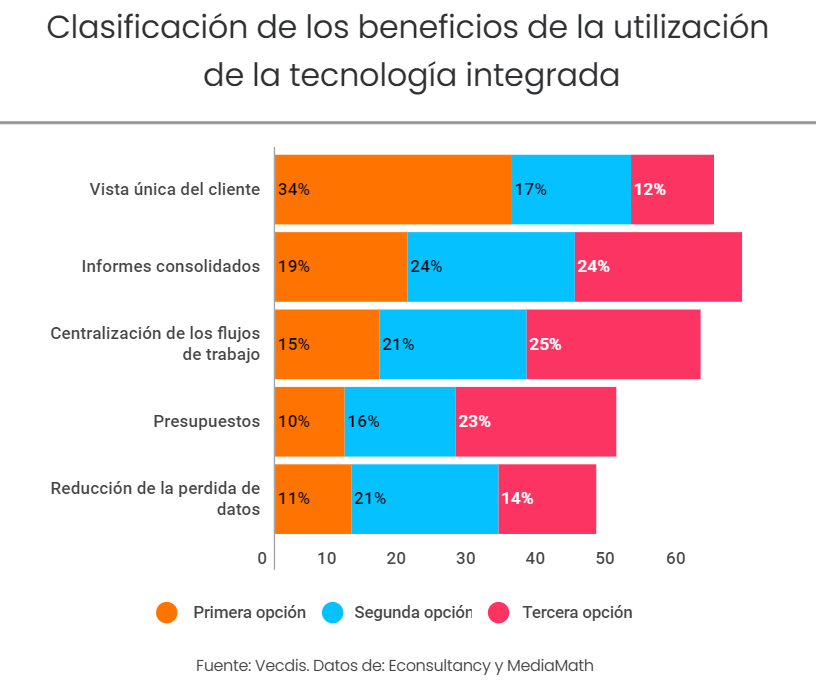
Meanwhile, a standard and shared identity space that reduces web latency ranks last in the order of importance when it comes to improving the customer experience in advertising. Suggesting that advertisers may be neglecting problems that could return to pursue them for the long term.
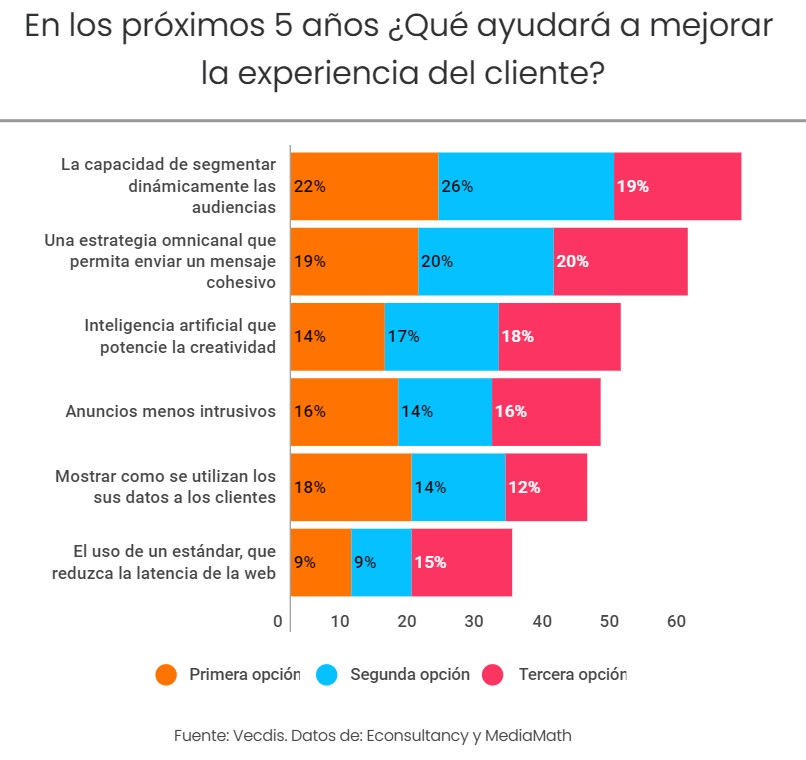
The GDPR: a game changer
The digital marketing industry has recognized that consumers should have greater control over their personal data. All permissions must not only be registered, but consumers should also be able to verify the information they have consented to and withdraw that permission later if they so wish.
Clearly, there is a requirement for consumers to feel that they have greater control over their data and to be kept informed about what it is used for. If behavior targeting is being implemented, it must be highlighted and, in the same way, if consumers are being tracked on different devices, this needs to be clear. Therefore, the Information Commissioner’s Office (ICO) has made an effort to point out that Privacy notices should be written in simple language to inform the public about what is being done with their data, why they are used in this way, and how they may object.
The GDPR has had a big impact on digital merchants who base their strategies on data obtained from their customers. With the controls set by the GDPR, advertising professionals focus on creating accurate and compatible datasets that allow them to build a more transparent relationship with customers.
This could be why advertisers are almost twice as likely as agencies and technology providers (39% vs. 20%) to reveal that the GDPR has had a “strong impact” on them.
However, the new regulation has “impacted a little” for 82% advertisers and 86% of agencies and technology providers. Therefore, while advertisers may have felt the strongest impact, the overall impact on the ad supply chain has been far-reaching.
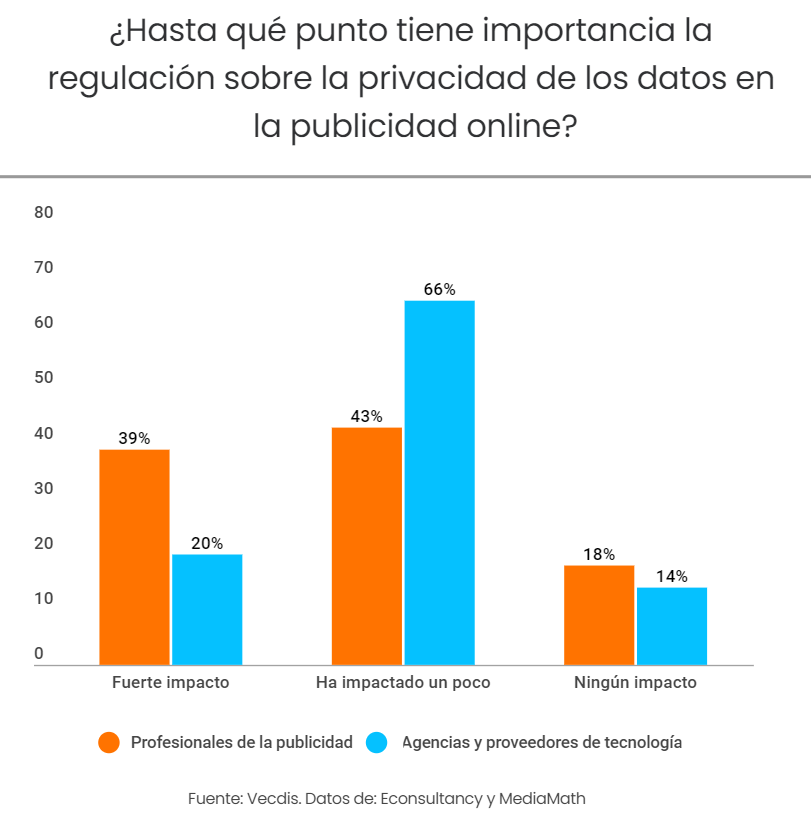
The new privacy rules represent a massive opportunity to put consumer needs at the forefront and center of marketing and advertising. A research study recently grouped GDPR marketing in two fields. On the one hand, 55% of the adopters of this new law have done so with a marketing approach and the remaining 45% has focused mainly on a legal approach.
Technological integration
As mentioned above, the huge growth of online advertising in recent years has been made possible by the high rate of technological advances in the industry. The scale and depth of what is now possible in online advertising, from formats to commerce, is based on a mosaic of technologies that have changed the perspective of digital advertising and what it means to be a professional in the digital sector marketing.
While we’ve seen major improvements in targeting, personalization, and ad effectiveness, the speed with which this change has occurred has allowed the tech landscape to become tremendously complex. Therefore, any attempt to map companies and subsectors within martech and adtech reveals a lot of one-off solutions.
An example of this is the latest version of a well-known martech landscape, made by chiefmartec.com editor Scott Brinker, showing a 27% year increase in the number of suppliers compared to last year, highlighting the continued proliferation of new technology suppliers despite the high level of consolidation within the industry.
In addition, IDC expects CMOs’ spending on marketing technology to exceed $32 billion this year, and studies show that spending on martech is related to success in many cases.
For example, a recent study by the Association of National Advertisers (ANA) concluded that within companies the companies that spend the most on marketing technology are also the ones that show the best performance.
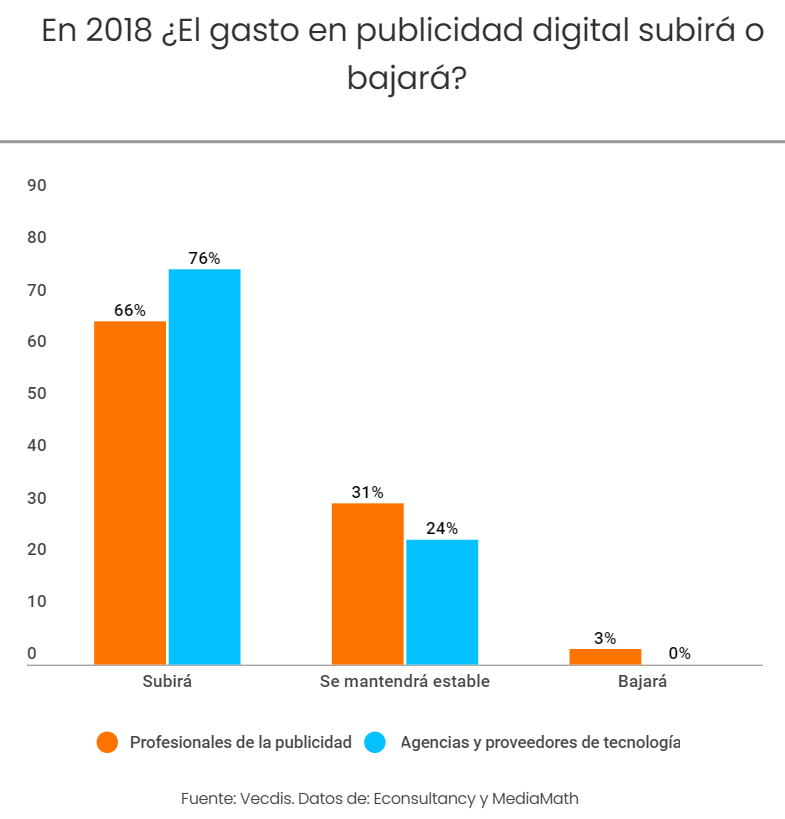
Although spending only on tools is no guarantee of success or satisfaction. Only 36% of advertisers are “very satisfied” with their current technology, and a lower percentage of adtech agencies and suppliers (8%) believe that their customers feel the same way.
Conclusions
Marketing professionals share a unique vision, in which the consumer becomes the center of any digital advertising strategy that ultimately seeks the benefit for both the individual and the brand.
There is a broad awareness and understanding that consumers require a perfect experience, in which their needs and expectations are first and foremost in the minds of each advertiser. However, while the industry recognizes the importance of a holistic and cohesive customer in the experience it requires, the reality of its approach is still far removed from the true consumer vision.
Many companies are hampered in their attempts to provide more relevant digital advertising due to confidence in point solutions rather than an integrated technology platform, a problem that sabotages their attempts to connect their marketing activities.
Meanwhile, the GDPR rule introduced earlier this year has forced the industry as a whole to recognize that individual privacy is imperative, even if, in a worrying way, many of the companies are still struggling to comply by the rules.
It is vital that brands, their agencies and digital advertising technology providers continue to cooperate to address the challenges facing the industry, including data privacy, technology integration and transparency between others.
If marketers can get consumers at the center of all decision-making, advertising will continue to play a vital role in helping businesses meet a number of business goals. While delights consumers and continues to be a growth engine for the global economy.


